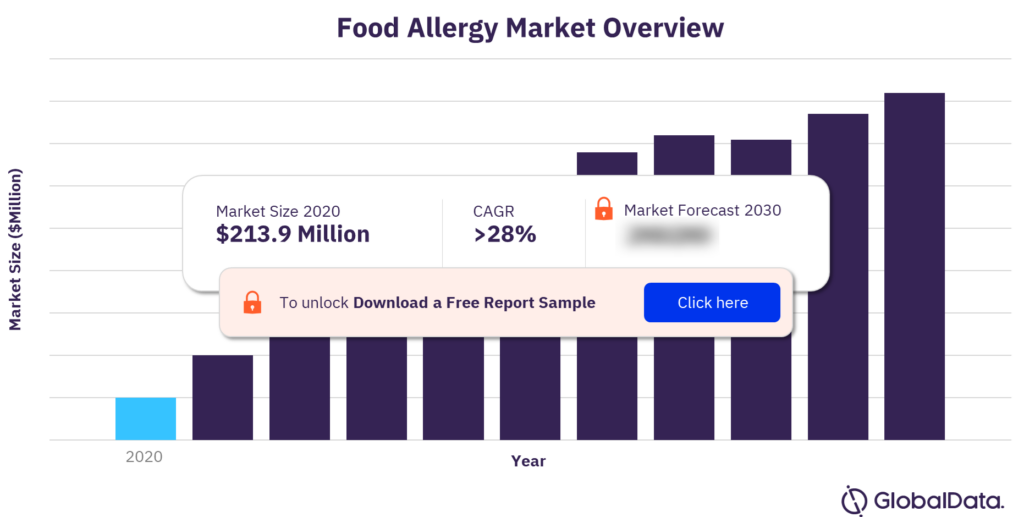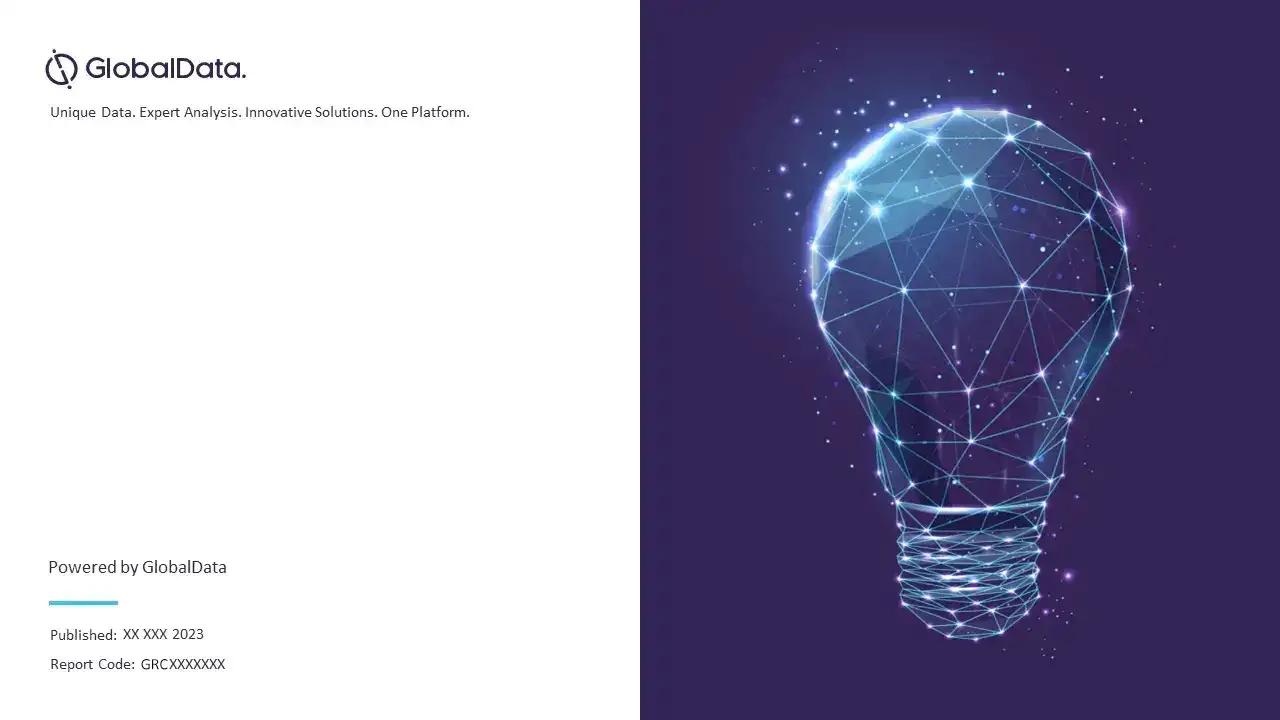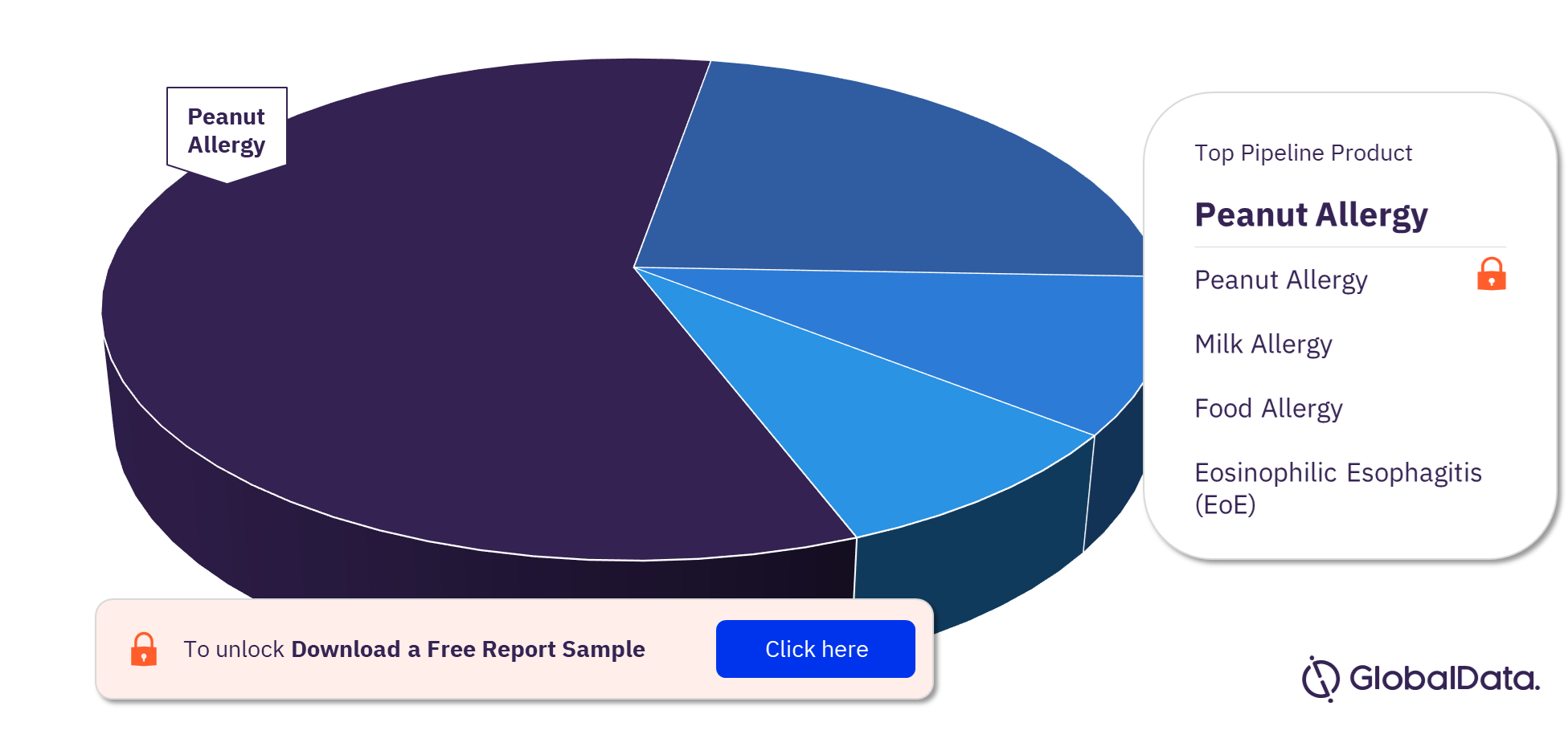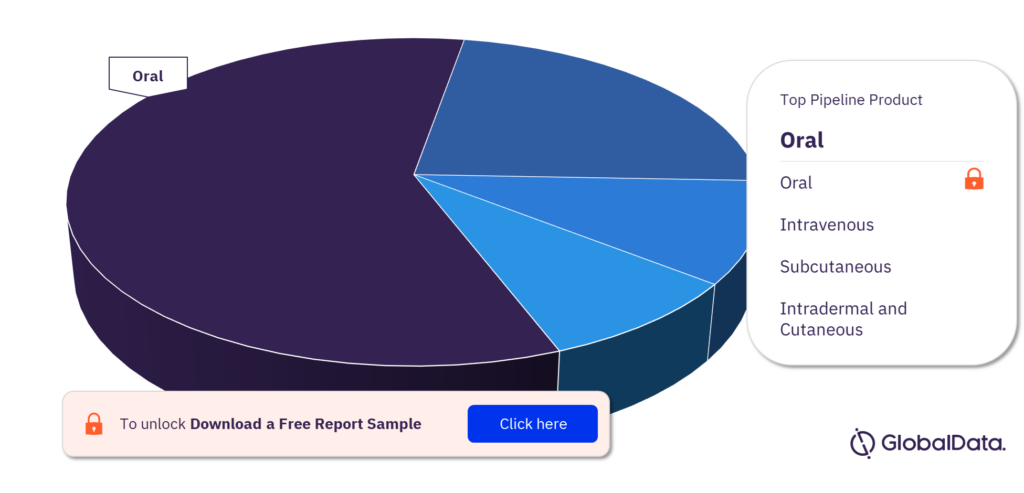Food Allergy Market Size and Trend Report including Marketed and Pipeline Drug Analysis, Competitor Assessment, Unmet Needs, Clinical Trial Strategies and Forecast to 2030
Powered by ![]()
All the vital news, analysis, and commentary curated by our industry experts.
Food Allergy Market Overview
The food allergy market was valued at $213.9 million in 2020 globally and is forecast to grow at a CAGR of more than 28% during the forecast period.
Food Allergy Market Overview, 2020-2030 ($Million) 
For more insights into the food allergy market forecast, download a free report sample
The food allergy market lacks a curative agent, with the only available treatments being antihistamines or epinephrine usage for accidental exposure. The food allergy pipeline consists of 31 drugs across all stages of development, with nine drugs expected to launch by 2030.
| Market size (Year – 2020) | $213.9 million |
| CAGR | >28% |
| Forecast Period | 2020-2030 |
| Key Treatments | Mild or Moderate and Severe |
| Key Pipeline Products | Milk Allergy, Peanut Allergy, Food Allergy, and Eosinophilic Esophagitis (EoE) |
| Routes of Administration | Oral, Intravenous, Subcutaneous, and Intradermal and Cutaneous |
| Key players | Aimmune Therapeutics, Dr. Falk Pharma GmbH, Sanofi, DBV Technologies SA, Novartis, AstraZeneca, Regeneron Pharmaceuticals Inc, Roche/Genentech, Camallergy (Cambridge Allergy Ltd), ALK-Abello AS, and Ellodi Pharmaceuticals |
Food Allergy Market Trends
Historically, the FA market has seen a lack of R&D. The market was focused on providing symptomatic relief, resulting in the use of off-label drugs such as antihistamines and epinephrine. Additionally, oral immunotherapy (OIT) is the most used treatment to raise the threshold dose for a food allergen and protect allergy patients against accidental ingestion of the allergen.
Food Allergy Market Treatments
The key treatments for food allergy are mild or moderate and severe. In mild or moderate treatment, antihistamines block the effects of histamine, a chemical that is responsible for most allergic reactions. In the severe treatment, epinephrine (adrenaline) constricts the blood vessels to counteract the effects of low blood pressure and relaxes the airways to ease breathing difficulties.
Food Allergy Market – Pipeline Products
The key pipeline products in the food allergy market are allergy therapeutics for milk allergy, peanut allergy, food allergy, and eosinophilic esophagitis (EoE). Most products in development are for peanut allergy, followed by EoE and FA.
Food Allergy Market by Pipeline Products
To know more about key pipeline products in the food allergy market, download a free report sample
Food Allergy Market - Routes of Administration
The routes of administration in the food allergy market are oral, intravenous, subcutaneous, and intradermal and cutaneous. Oral administration is the most frequently utilized route of administration for products in the FA pipeline.
Food Allergy Market by Routes of Administration
To know more about routes of administration, download a free report sample
Who are the key players in the food allergy market?
Some of the key players in the food allergy market are Aimmune Therapeutics, Dr. Falk Pharma GmbH, Sanofi, DBV Technologies SA, Novartis, AstraZeneca, Regeneron Pharmaceuticals Inc, Roche/Genentech, Camallergy (Cambridge Allergy Ltd), ALK-Abello AS, and Ellodi Pharmaceuticals.
Scope
This report provides:
- Overview of FA including etiology, pathophysiology, symptoms, diagnosis, and treatment guidelines.
- Key topics including the current treatment and pipeline therapies, trends, clinical trials, unmet needs, challenges and opportunities, and market analysis.
- Analysis of the current and future market competition in FA therapeutics market.
Reasons to Buy
The report will enable you to:
- Develop and design your in-licensing and out-licensing strategies, using a detailed overview of current pipeline products and technologies to identify companies with the most robust pipelines.
- Develop business strategies by understanding the trends shaping and driving the FA therapeutics market.
- Drive revenues by understanding the key trends, innovative products and technologies, market segments, and companies likely to impact the FA market in the future.
- Formulate effective sales and marketing strategies by understanding the competitive landscape and by analyzing the performance of various competitors.
- Identify emerging players with potentially strong product portfolios and create effective counterstrategies to gain a competitive advantage.
- Track drug sales in the FA therapeutics market from 2020-2030.
- Organize your sales and marketing efforts by identifying the market categories and segments that present maximum opportunities for consolidations, investments, and strategic partnerships.
Dr. Falk Pharma GmbH
Sanofi
DBV Technologies
Novartis
AstraZeneca
Regeneron Pharmaceuticals (Sanofi)
Roche/Genentech
Camallergy (Cambridge Allergy Ltd)
ALK-Abello AS
Ellodi Pharmaceuticals
Table of Contents
Frequently asked questions
-
What was the food allergy market size in 2020?
The food allergy market size was valued at $213.9 million in 2020
-
What is the food allergy market growth rate?
The food allergy market is forecast to grow at a CAGR of more than 28% during the forecast period.
-
What are the key treatments for food allergy?
The key treatments for food allergy are mild or moderate and severe.
-
What are the key pipeline products in the food allergy market?
The pipeline products in the food allergy market are allergy therapeutics for milk allergy, peanut allergy, food allergy, and eosinophilic esophagitis (EoE).
-
What are the routes of administration in the food allergy market?
The routes of administration in the food allergy market are oral, intravenous, subcutaneous, and intradermal and cutaneous.
-
Who are the key players in the food allergy market?
Some of the key players in the food allergy market are Aimmune Therapeutics, Dr. Falk Pharma GmbH, Sanofi, DBV Technologies SA, Novartis, AstraZeneca, Regeneron Pharmaceuticals Inc, Roche/Genentech, Camallergy (Cambridge Allergy Ltd), ALK-Abello AS, and Ellodi Pharmaceuticals.
Get in touch to find out about multi-purchase discounts
reportstore@globaldata.com
Tel +44 20 7947 2745
Every customer’s requirement is unique. With over 220,000 construction projects tracked, we can create a tailored dataset for you based on the types of projects you are looking for. Please get in touch with your specific requirements and we can send you a quote.
Related reports
View more Pharmaceuticals reports










